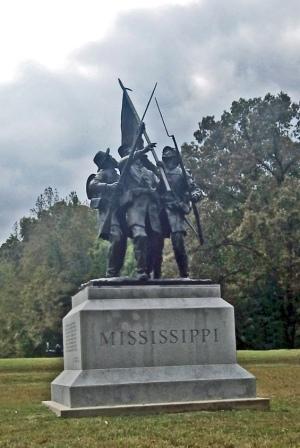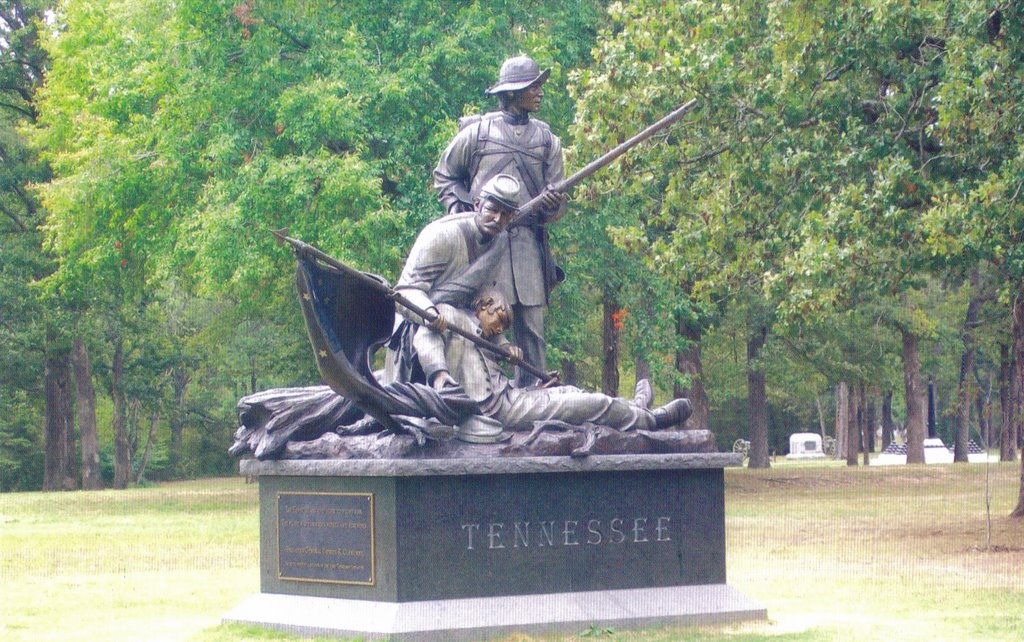Mississippi returns to Shiloh
Nearly 6,000 Mississippians fought at Shiloh, filling the ranks of 7 artillery batteries, a cavalry battalion, and ten infantry regiments. Until now, only the red war department tablets have marked their passage across the battlefield. When the park was created in the 1890s, the state of Mississippi could not afford to sponsor individual unit markers, as the northern states did; nor could it even afford to erect a state memorial.
In fact, few parks have much by way of Mississippi monuments. As might be expected, Vicksburg has a large Memorial to the Mississippians who fought there, but Gettysburg didn’t get a Mississippi State Memorial until 1973. Chickamauga-Chattanooga has none, despite the many Mississippians who fought there, in either the September or November actions. The 11th Mississippi Infantry, thanks to some especially dedicated supporters has no less than two monuments at Gettysburg, erected in 2000, and one at Antietam, put up in 2012.
Perhaps not surprisingly, the Gettysburg stones engendered some controversy, especially with regard to the placement of the “high water mark” monument, just off Hancock Avenue on Cemetery Ridge. On a field where Confederate markers were originally only allowed at their starting positions, the Cemetery Ridge placement was a modern exception, which some found jarring.
The most recent Mississippi Memorial has generated no similar debate. In fact, it hasn’t drawn much notice at all, that I can tell. On October 10, 2015, the new monument, pictured above, was unveiled in Rhea Field. The 6th Mississippi charged across the northern end of the Rhea farmstead, engaging the isolated 53rd Ohio and then moving on to come up hard against the rest of Col. Jesse Hildebrand’s Union Brigade, in line just north of Shiloh Branch.
The 6th suffered 70% losses, most of them in Rhea Field, shredded by the fire of the 53rd and the guns of Capt. Allen C. Waterhouse’s Battery E, 1st Illinois Light Artillery. At the end of the first day’s fighting, the 6th mustered only 60 men, and even after they returned to Corinth, numbered only 100. Many of the men who charged into Rhea Field behind the “Bloody Sixth’s” battle flag remain there, in one of the numerous mass grave burial trenches that dot the battlefield.
I have yet to visit the new memorial, the second “modern” marker to be erected. The first came in June, 2005, when the State of Tennessee put up a monument in Woolf Field, near Water Oaks Pond and very near the infamous crossroads of the Corinth and Hamburg-Purdy Roads. I now have yet another reason to return to Shiloh. I hope you do too.


Reblogged this on Poore Boys In Gray and commented:
The Poore brothers didn’t fight at Shiloh, but when the rebels pulled back to Corinth, John F. Poore with the 37th Mississippi joined them there to defend the town…